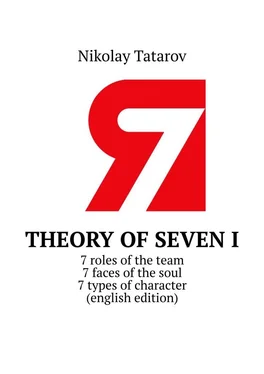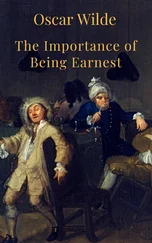The gods also live in the teams, so the ancient religions are characterized by the peculiar faith – the pantheons were made up of 7 supreme gods. For example:
– 7 great gods of ancient Egypt (Ptah, Ra, Shu, Geb, Osiris, Set, Gore);
– 7 supreme deities of ancient Babylon (Marduk, Naboo, Shamash, Sin, Ishtar, Nergal, Ninurta), which corresponded to 7 temples, 7 towers-ziggurats;
– 7 main gods creators (“deciding destinies”) in a pantheon of Sumer and Akkad;
– 7Immortal deities in ancient Iran (Zarathustra has got a revelation from them);
– 7 gods of Duke Vladimir’s pantheon in ancient Russia (Perun, Horse, Stribog, Simarigl, Mokosh, Volos, Svarog);
– 7 supreme gods-Olympians of ancient Greece (Helios, Hermes, Aphrodite, Ares, Zeus, Kronos, Artemis);
– 7 supreme gods of ancient Rome (Apollo, Mercury, Venus, Mars, Jupiter, Saturn, Diana);
– 7 gods of Scythian-Sarmatian mythology (Tabiti, Papai, Api, Goitosir, Argimpas, Targitai, Arei);
– 7 gods of ancient Ossetia-Alania (“Puryatsk Faith”, the sanctuary of Avd Zuari near Galiat in North Ossetia, the plot of the Nart epic “Gifts of the celestials to Soslan”);
– 7 gods of happiness and luck of ancient Japan (Ebisu, Daikoku-teng, Hotei, Jurojin, Fukurokuju, Bisyamon-teng, Benzai-teng).
The myth about the creation of people by the goddess Ninti from the ancient Sumerian epic “Atrahasis” is noteworthy:
Ninti pinched fourteen pieces of clay;
Sevenof them she put aside on the right,
Sevenput aside on the left…
The goddess has accepted twice seven childbirth,
Sevenwas born of a masculine gender,
Seven –a feminine gender.
It is possible to recall the Greek tragedy “Seven Against Thebes”, recall the 7 sister-pleiad daughters of Atlant, whom Zeus transformed into a constellation, 7 sons and 7 daughters of Helios, 7 Saint Old Testament martyrs (7 brothers Maccabees), 7 angels of the Apocalypse, but the word “family”, in which the number 7Is clearly contained, speaks more eloquently about the number of members of the team. The family is 7I (seven I).
The 7 roles of the team is a fact observed by mankind throughout history and therefore reflected in the culture, traditions and religions of the peoples of the world.
Family – it is not just the team connected by ties of marriage and relationship. Family – this is a compulsively established, lapped team. It is known: if characters in the family don’t get on well in any way, then there are no ties of relationship or marriage will keep the family from destruction.
Any team is not just a set of a certain number of members. The team has an internal device – a system of relations between its members. The relationship in the team is built up not at once. Each person needs to find his “place” in the team, everyone must take his “position”, should get his role. “Places”, “Position”, roles – this is all the same. The team has 7 “places” (“positions”, roles).
People, wised with life experience, know that in the team it is necessary to “establish” themselves. It means that with the certain behaviour one has to declare his claims for quite concrete “position” in the team. However, not everyone can like the claims regarding this “position”. In response, the others can “point to his place”. They can also put someone “in place”. And it will not be the place where the person would prefer to “put” himself.
In the process of lapping of people in the team, there is a fight between them for roles, for “places”, for “positions”. There are role arguments and showdown. If a person in the team is offered or imposed a role that does not fit to the certain mode of thinking, then he has a mental discomfort. He attempts to change the attitude towards himself, tries to change the position in the team. As a result, he either obtains the other role or accepts his role (“love comes with habit”). Otherwise, he has to leave this team, and then they say about him: “He didn’t get on well in the team”. In working teams say: “We haven’t worked well together with him”.
Eventually, members of the team get on well with each other and the relations between them are stabilized. The team with established and settled relationships is called a lapped, established team. In such a team all roles are occupied and, most importantly, the roles that are occupied suit all members of the team.
Each team attempts to become established and lapped team. As the team has 7 roles, the team wishes to consist of 7 members, from 7I.
If the team has fewer members than 7, then the team achieves to get members for unoccupied (vacant) roles, and if the number of members in the team is more than 7, then the team achieves to get rid of excess members.
They say that the family is a unit of society. It is true. Established, lapped team – this is a unit of society. Each established, lapped team consist of 7 members, of seven I.
LANGUAGE OF FEELINGS AND RELATIONS
Now let us talk about where the roles come from. By the way, everywhere in this book the word “role” is understood not as a role of theatre or cinema, but a psychic role.
People communicate with each other not only in the language of words, but also in the language of feelings (emotions, moods). And the language of feelings is a language of relations.It is not a coincidence that question: “What is your attitude to it?” – is always a question: “What feeling do you have about this?” Therefore, in reply, they tell of some feeling. They say: “I treat this with admiration (contempt, joy, pride, distrust, envy, hatred, ecstasy, horror, satisfaction, etc.)”.
Relations and, consequently, feelings, have a role nature. They, explicitly or implicitly, always connected with “places”, “positions”, roles. With the tone of speech, gestures, facial expressions, posture, by which people express their feelings and attitudes, it is possible “to indicate to a person his place”, and it is possible to “put a person in place.” Another thing is that in response you can hear: “What do you take me for? In what tone are you talking to me?!” Such a response means that a person does not like the role (that “place”) that he was given, does not like the “place” to which he is “put”.
Each feeling, except for strength (depth), has also a role direction. Each feeling is an attitude that is directed from one role to another.Experiencing some feeling, the person is in the role with which this feeling is connected. At the same time, referring to another person with this feeling, he suggests (points) him to take that role to which this feeling is addressed.
Example.
The sense of superiority is the attitude, reversed from the role of the Head-Idol to the role of the Victim. When you look down at another one, with superiority, then at this moment you are on the role of the Head-Idol, and you with tone of excellence “point the place” (you instruct to take the role of a humiliated Victim) to that person to whom you address with superiority. In response, you can hear: “In what tone are you talking to me?” What do you take me for?! What are you here pretending to be in front of me?” – This means that he does not like the “indicated place” (the role of the Victim), and he does not recognize your claim to the role of an Idol.
3 feelings are connected with each role (emotions, moods, state of mind). In the end, 7 roles are related to each other with 21 feelings, which constitute the basic set of feelings.From this set, all the vicissitudes of relationships and experiences are composed, just as words and sentences from the letters. There is a scheme of the relations between roles and role record of feelings which are actively used in the role theory of feelings and relations.
Читать дальше












